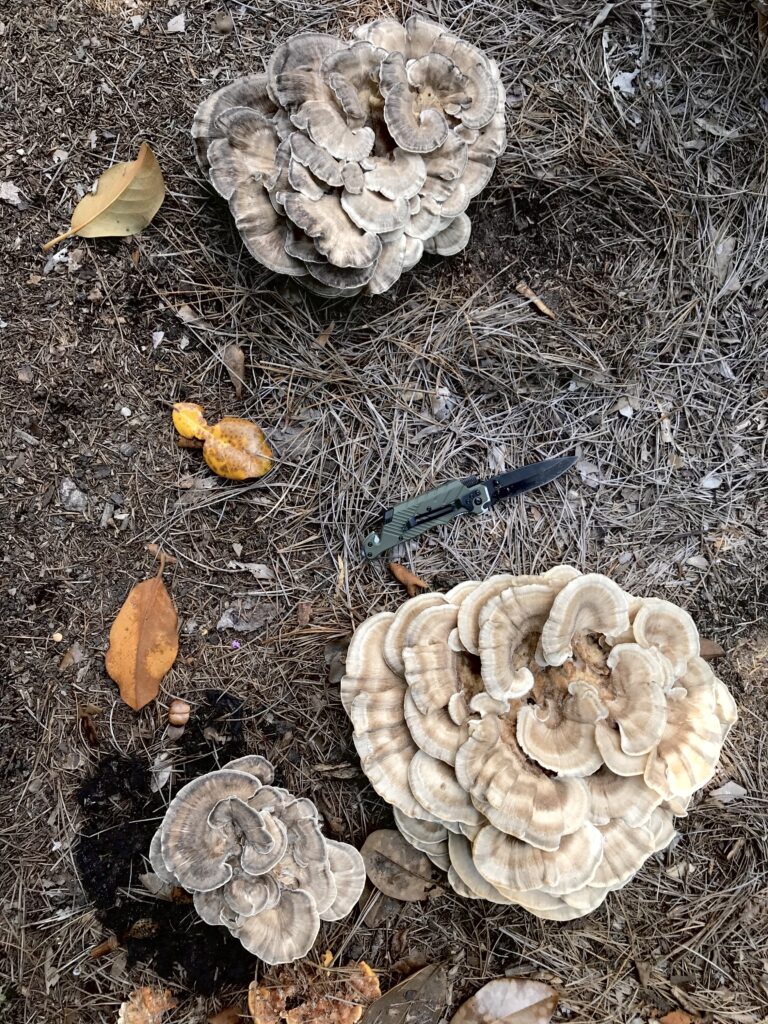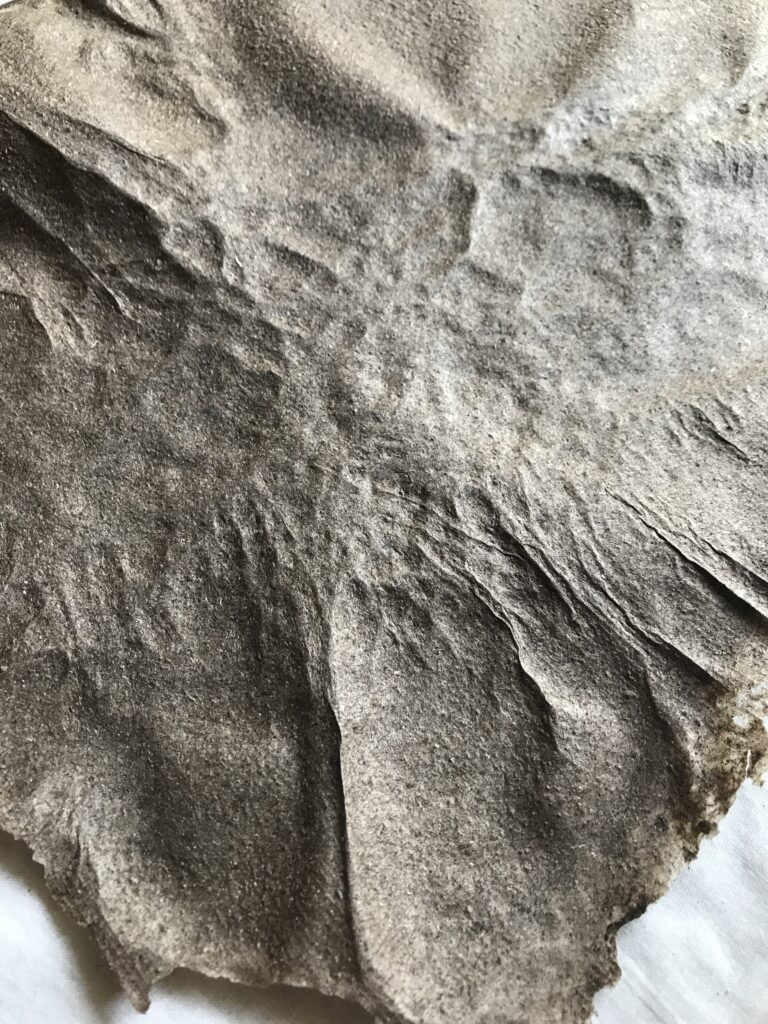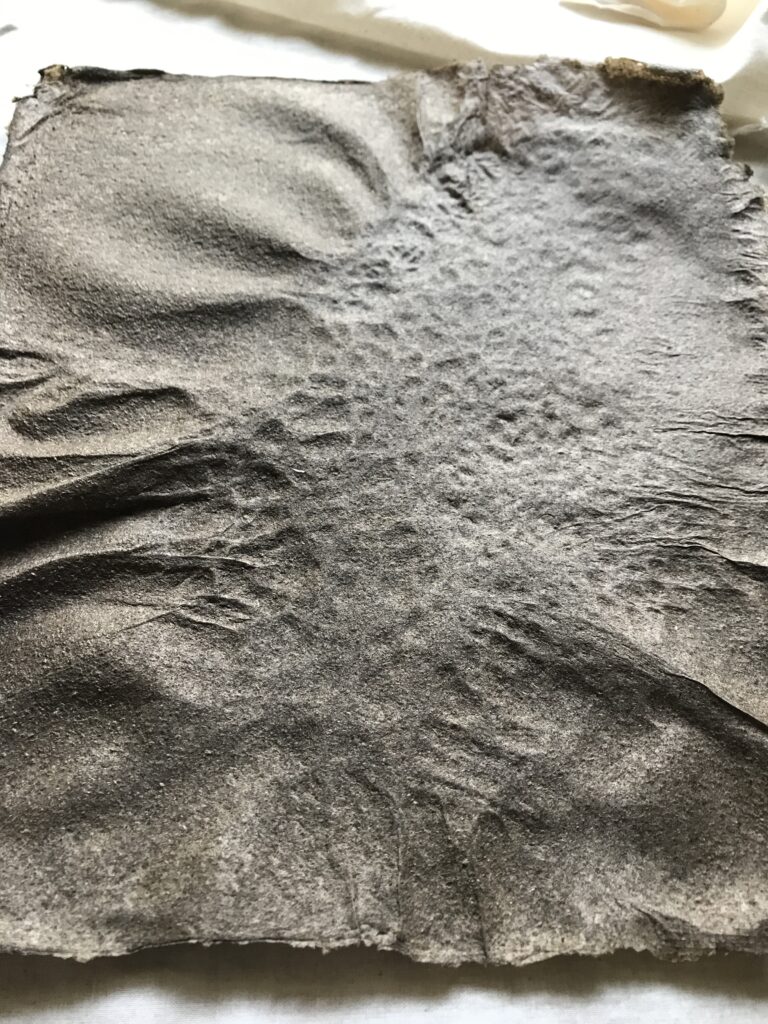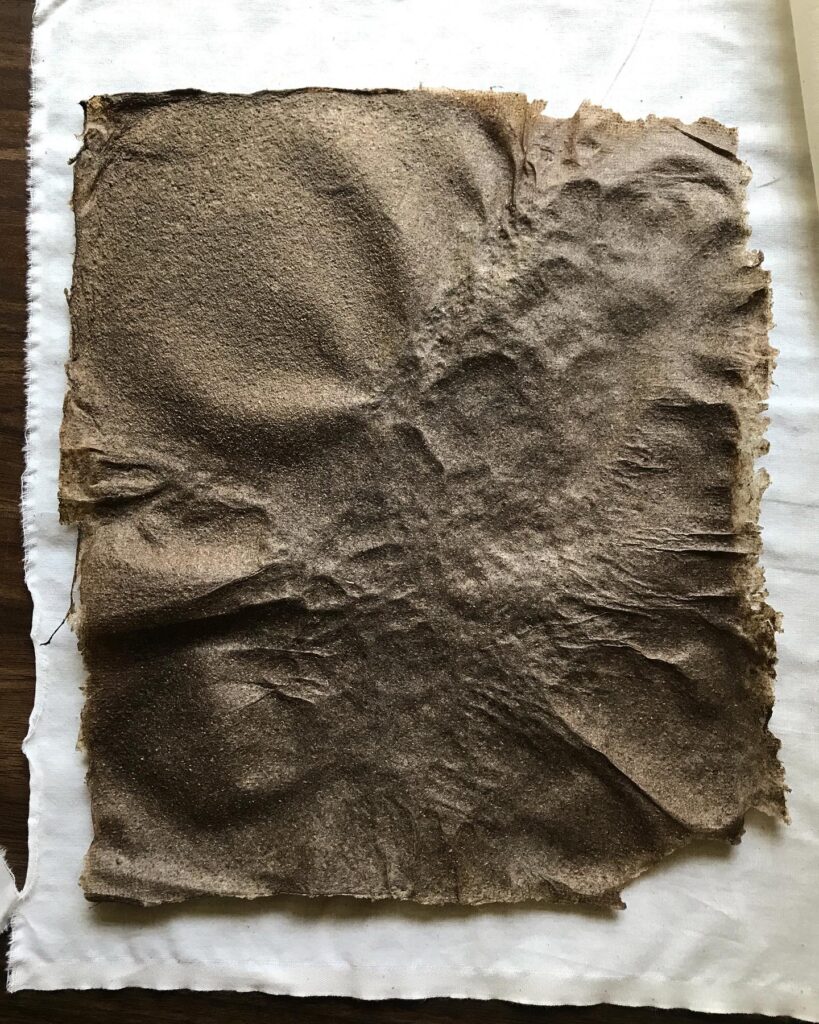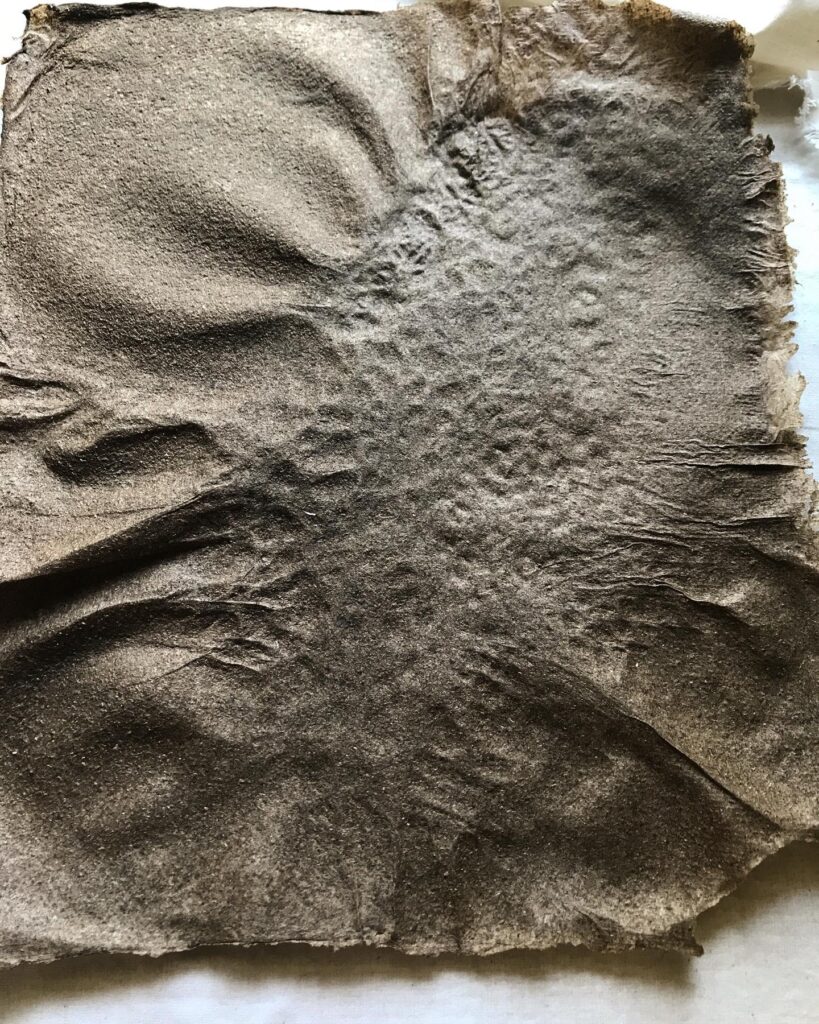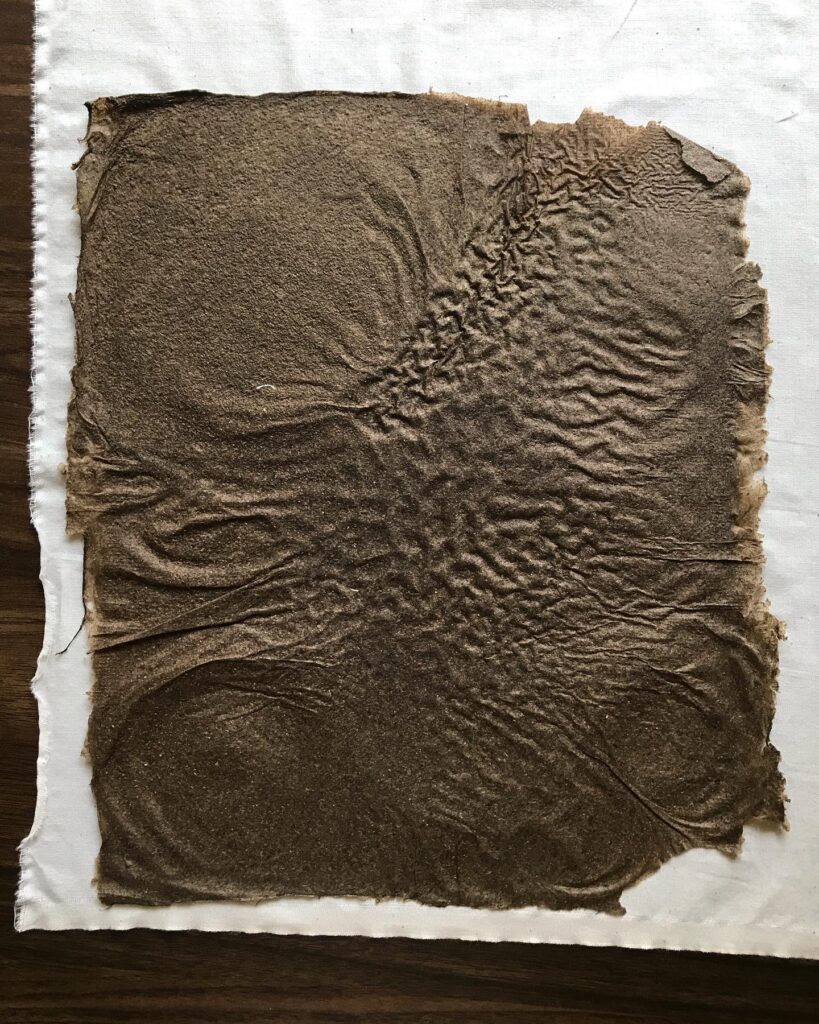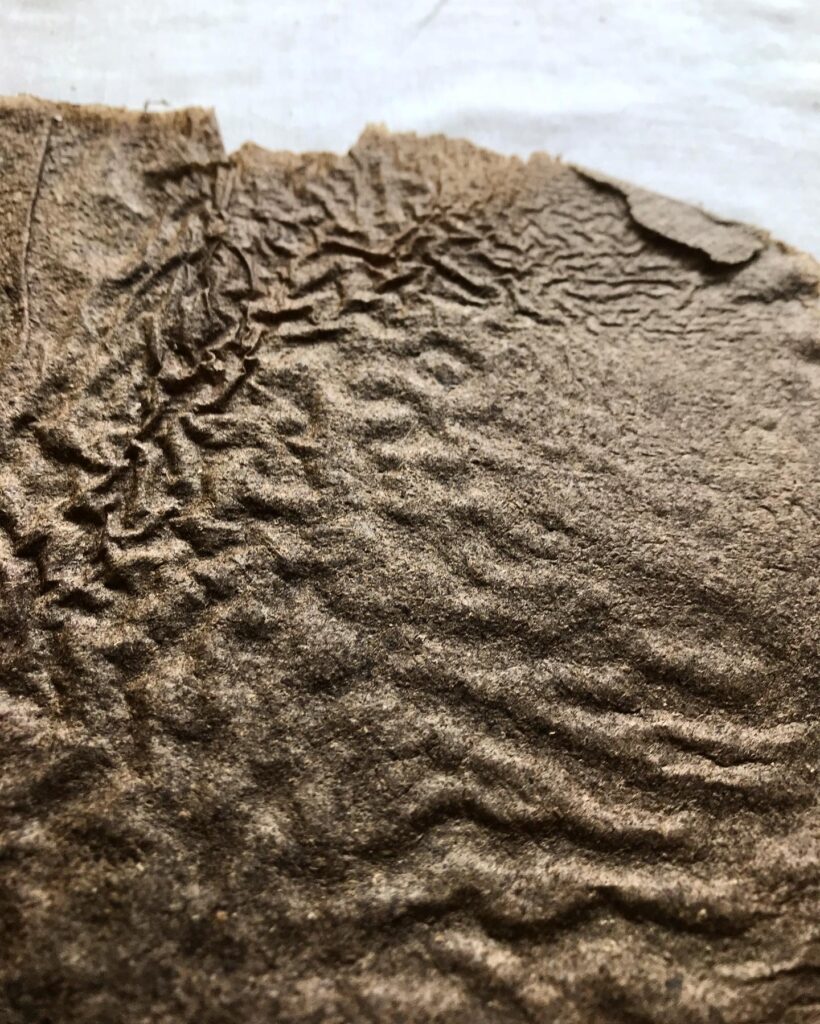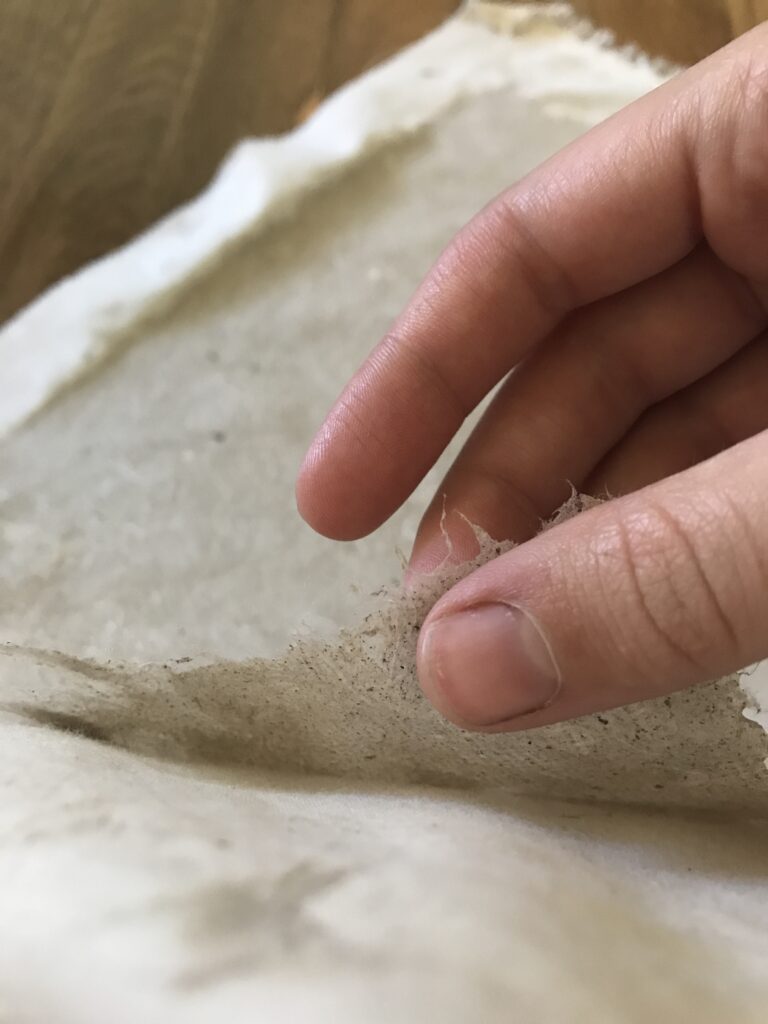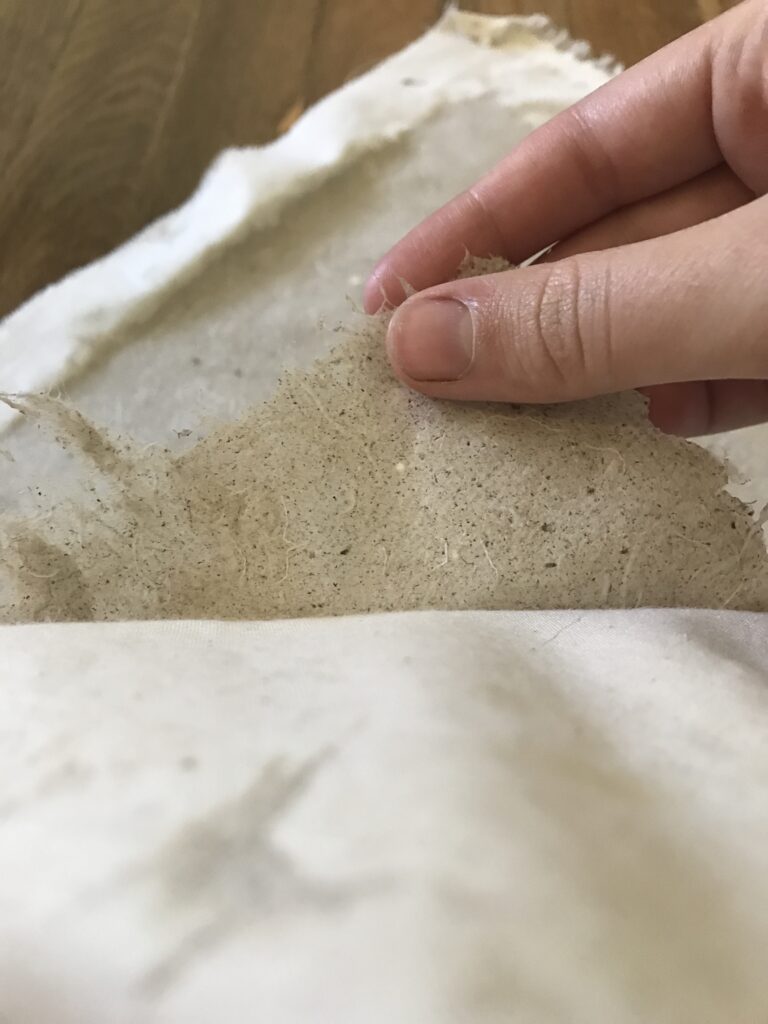In the late summer and early fall of 2020, I began investigating mushrooms as a papermaking medium. I have long been interested in the material uses of fungi, and had come across the work of a few paper makers online who incorporate mushrooms into their practice. These artists have derived the term “mycopaper” from the root word myco, which means “fungi”. Referencing their work as a guide, I started my own series of mushroom paper experiments.
I fashioned my own mould and deckle with thrift store wooden frames and some scrap window screening left over from a home project. For my first papermaking attempt, I made a simple slurry consisting only of the tough portions of black-staining polypore mushrooms, first soaked to soften the fibers, then blended with plenty of water. This mixture resulted in a beautifully rich, deep brown color for the paper. As it dried, it became very fragile and brittle, and thus impractical for most typical paper uses. However, this whole process was immensely pleasurable to take part in and witness. The drying paper ended up becoming an organic, time-based art object of its own.
For my next mycopaper iterations, I wanted to create some more flexible, durable, utilitarian paper. I decided to add supportive materials to my slurry along with the mushrooms themselves. I experimented with differing ratios of water, mushrooms, repurposed paper scraps, and cotton fibers from worn-out clothing. I was also curious to try a different mushroom species. In one batch of paper, I used Stereum ostrea (known commonly as false turkey-tail or golden crust), which fruit abundantly in the local ecosystem. I ended up with papers of varying shades, textures, and thicknesses, all of which were easier to work with than my first mycopaper attempt.
I’ve gone on to use my mushroom paper in various creative projects, and I look forward to continued exploration of this medium!

